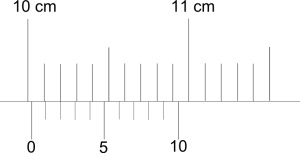
Read the number of smaller subdivisions. Read the small number division. A Vernier Caliper To read a vernier caliper: Read the large number division first. Calipers often have a dial or digital readouts instead.
It uses a Vernier scale, pioneered by French mathematician Pierre Vernier in the 17th century.Reading of scale and vernier (vernier caliper with 0.1 mm division: a) size 40 mm b) size 40.7 mm. To read this value the first step is: Obtain Main Scale Reading:Part 1a: Making measurements using a Vernier caliper The Vernier caliper is an instrument used to measure external and internal dimensions of an object with precision up to one hundredth of a centimeter (or equivalently, one tenth of a millimeter). Calipers are drawn with both an inch scale and a metric scale.We will assume that you have taken the necessary steps before measurement and positioned the calipers correctly according to the required dimension which needs to be measured and now the scales of the caliper have moved a certain distance to indicate the measured value. Measurements Accurate to.02 mm. Read which line on the vernier lines up with a line on the main beam.Reading a Vernier Caliper.
Find The Vernier Scale Reading:The Vernier scale is graduated in either 20 or 50 increments. In the example we can see that the exact value is slightly greater than 2.1 but how much? This will be determined by the vernier scale reading. In the example below the value immediately before the zero mark is 2.1 cm.The main scale has given us a number but it is not the exact value of the measurement. To find out the main scale reading look at the value on the scale directly on the left of the zero mark of the vernier scale. In case of metric units the smallest value that can be measured by the main scale is 1mm. It is graduated in millimetres or inches.
For example in the above picture the line corresponding to 3 on the vernier scale aligns perfectly so the vernier scale reading is 0.3mm.The final step is to simply add the two values to obtain the final reading. This value is the vernier scale reading. Just look for the line on the vernier scale which is perfectly aligned with mark on the main scale. Reading the vernier scale requires a bit of observational skill and since it is the most important step of the process we suggest you do this very carefully. So that gives a least count of 0.02 or 0.05mm respectively.
These should align with each other but if they don’t then you have a zero error. When the jaws are in close contact with each other, check the position of the zeros on the main scale and the vernier scale. Zero Error AdjustmentThe Zero error can be checked by closing the jaws of the caliper without any object in between.
This is the 6 th mark so the value is 0.6 mm. This means that the final value will be more than the actual value so the zero error needs to be subtracted from the final value.In the picture shown above the value of the zero error can be found by looking at the aligned mark on the vernier scale. This value should then be either added or subtracted from the total reading.If the vernier zero is to the right of the main scale zero when the jaws are closed then the error is a positive zero error. However if they do occur they can be compensated for easily by just measuring the value of the zero error.To do this you have to close the jaws of the caliper and note the value of the vernier scale which coincides with the main scale just like when reading the vernier scale.



 0 kommentar(er)
0 kommentar(er)
